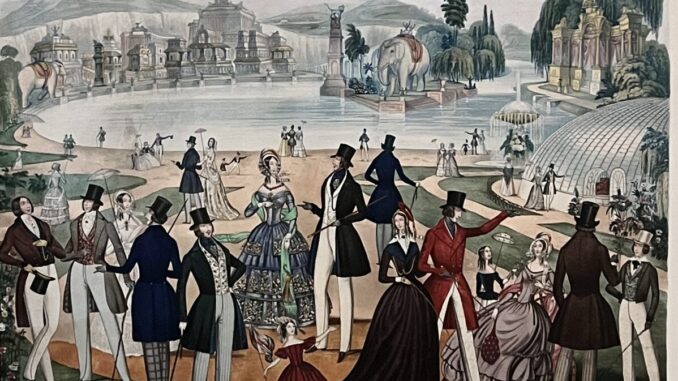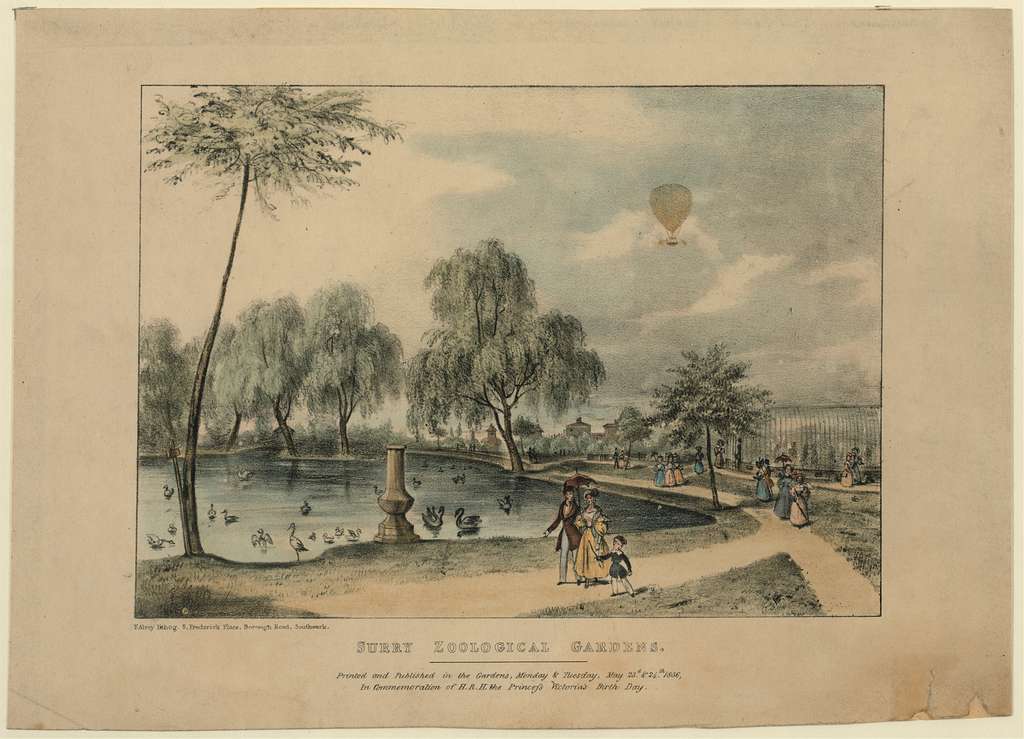
To the Garden Museum in the old St Mary at Lambeth church (burial place of William Bligh, of ‘Mutiny on the Bounty’ fame), hard by the Tudor Gate of Lambeth Palace, to see the ‘Lost Gardens of London’ exhibition (running until 2 March 2025).
Curated by Dr Todd Longstaffe-Gowan, it looks at some of the private gardens and public spaces that have been and gone in the capital over the past 500 years. Sometimes these were personal ventures that disappeared with their founders, others were commercial enterprises that flourished for a short while and then closed, but most were simply swept away as the city stretched and spread, the relentless development of London’s built environment pooling ever further out from the centre.
From the hundreds (thousands?) of such lost places Longstaffe-Gowan has chosen a small selection of the “appealing, curious, unusual and representative”, with paintings, drawings, maps and plans, and some photographs to illustrate what was.
Thus we learn about the garden of diarist, courtier and gardener John Evelyn in 17th century Deptford, or the gardens of Northumberland House on the Strand that were dug up when that grand house was demolished in the 1860s. (Shrubs from this were replanted in Bazalgette’s Embankment Gardens, so might still survive today.)
Or there is Dr Phene’s house in Chelsea – a “nightmare medley in gilt and plaster and terracotta”, whose 4 acre garden (4 acres! In Chelsea!) was “a dank jungle sprinkled with a reckless profusion of meaningless iron and marble.” I mean, who wouldn’t want to visit that.
There are country house gardens in Bloomsbury and Belsize, at Old Somerset House and in Lambeth. Before Imperial College was built that part of South Kensington had 22 acres for the Royal Horticultural Society with italianate gardens and buildings, and an absolutely huge conservatory.
There’s even a mention for the Marble Arch Mound of recent memory (although most of us would like to forget it), contrasted with the Great Dust Heap, a mountainous construct of refuse on the site of present day King’s Cross.
Also in recent times the William Curtis Ecological Park stood for nearly ten years in the shadow of Tower Bridge (pretty much where the old City Hall and Potters Field now is). This was the UK’s first urban ecology park, and a haven for wildlife and plants (when it closed in 1985, 5,000 frogs had to be relocated). It would be fantastic if it had remained, another Camley Street in the central zone.
But the one I’m really sad to have missed was a ‘pleasure garden’, a commercial garden for which one bought a ticket to visit the attractions inside. The most famous of these was the Vauxhall Pleasure Gardens, but there were lots of others scattered across the capital, and featured in the exhibition is the Surrey Zoological Garden, which was just south of Elephant and Castle.
This was the brainchild of Edward Cross, who had had a menagerie in Exeter Exchange on Strand, but moved the animals to this 15 acre south London site in competition with the recently opened Regent’s Park zoo. It had aviaries and a circular domed conservatory some 90m in circumference in which the exotic animals were caged. There was a 3 acre lake with an island that had a colossal elephant model, and, most dramatically, ‘reenactments’ of famous historical events. Which of us would not go to Walworth Road to see a recreation of the eruption of Vesuvius, or of the Great Fire of London, or even of Napoleon crossing the Alps.
The gardens attracted 8,000 visitors a day at their peak, including Queen Victoria, who visited twice, but declined after the animals were sold off in the 1850s and they finally closed in 1862.
You can visit the exhibition at the Garden Museum until March 2025 (Details here). The book of the exhibition is available from the museum, or via Amazon.


